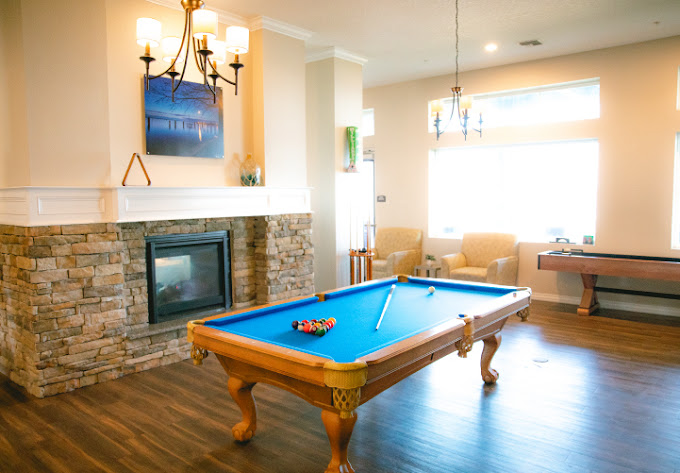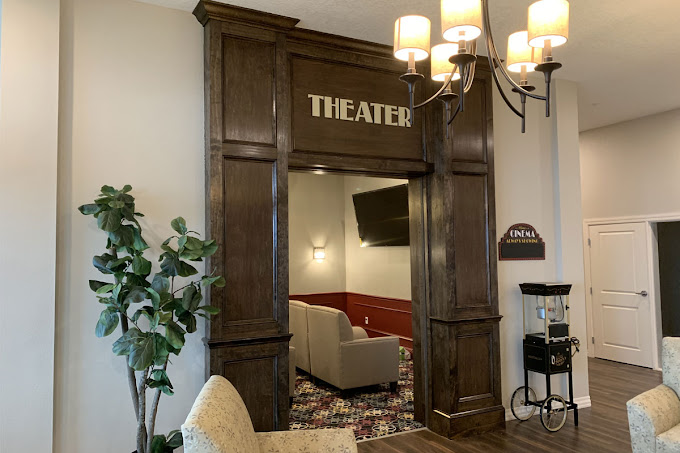Every day in the U.S., 10,000 people turn 65, and the number of older adults will more than double over the next several decades to top 88 million people representing over 20 percent of the population by 2050.
While a number of alternative lifestyles are available to the rapidly increasing number of people upon retirement and beyond, many regard luxury or resort-style assisted living to be the superior solution.
Examining the things that differentiate a luxury assisted living community from a standard assisted living or senior care facility helps to explain why.
Amenities:
Luxury Assisted Living Communities offer high-end amenities such as in-house spas and bistros, heated pools, movie theatres, libraries, sunrooms, game rooms, and access to golf and tennis. Some high-end resort-style assisted living communities even offer the amenity of a waterfront location with scenic views and all the outdoor activities those locations afford.
Standard Assisted Living Facilities provide essential services and amenities for comfortable living but typically do not include many luxury features. While they may provide excellent care and comfortable housing there are few frills or “extras.”
Environment:

Luxury Assisted Living Communities often boast opulent environments with contemporary, even designer décor. Walls may be hung with artwork or high-end photography. Many units feature views, high-end appliances, and bespoke details.
Standard Assisted Living Facilities tend to focus more on providing a safe, clean, and pleasant living space without high-end finishes.
Staffing:
Luxury Assisted Living Communities offer a higher staff-to-resident ratio, with full staff, which may include 24/7 nurses and various therapists with an in-house or on-call Doctor. They may also have more rigid standards for hiring employees.
Standard Assistant Living Facilities ensure adequate staffing to meet residents’ needs but may not provide the same level of personalized care.
Social and Recreational Activities:
Luxury Assisted Living Communities provide a wide range of opportunities for social stimulation and personal growth. From art classes, book and investment clubs, and social meet and greets, to hobbies, crafts, games, special events, and live performances there is seldom a lack of personally satisfying and enriching activities available to residents.
Standard Assistant Living Facilities also provide residents with activities for engagement and enrichment but they are unlikely to be as extensive or exclusive as those offered in luxury assisted living communities.
Cost:
Luxury Assisted Living Communities tend to be about 30% more expensive than standard assisted living communities, reflecting the quality and exclusivity of their offerings.

Standard Assistant Living Facilities are more budget-friendly while still providing necessary care and services.
Exclusivity and Lifestyle:
Luxury Assisted Living Communities cater primarily to seniors who are accustomed to or desire a luxurious lifestyle and can afford it.
Standard Assistant Living Facilities aim to provide a good quality of life that is accessible to a broader range of seniors.
Profile of the Luxury Assisted Living Resident:
While no type or class of individual typifies the luxury assisted living resident a substantial number share the following characteristics.
Affluent Background: Many residents have enjoyed a prominent level of personal success and standard of living and wish to continue this lifestyle into their retirement.
Active Lifestyle: They often seek to maintain an active and social lifestyle, engaging in activities like golf, tennis, and swimming available on-site or close by.
Value Exclusivity: A preference for exclusivity and privacy is common, with many having saved expressly to retire in style.
Desire for High-Quality Care: Access to attentive staff and personal care assistance is a priority, ensuring their needs are met promptly, efficiently, and to their satisfaction.
Socially Engaged: They enjoy participating in a community with rich social stimulation, including excursions, cultural events, and various enrichment activities.
Luxury Assisted Living residents typically look for a blend of comfort, luxury, and comprehensive care that matches their previous standards of living and supports their desire for a fulfilling and dignified retirement.
Decide What’s Important…
Personal Preferences: Personal preferences can include everything from geographic location, and proximity to shopping, attractions, and cultural events to the layout, architecture, and setting of the community itself.
High-end assisted living community amenities often provide gourmet dining, fitness centers, pools, spas, cultural programs, and concierge services are important in delivering the promised luxury. Equally important are the presence of refined interiors, tasteful décor, and appropriate appointments. The degree to which each of these amenities contributes to the enjoyment of a more upscale living environment is, again, a matter of personal taste.
Care Needs: It is critical for prospective residents to honestly assess the level of personal care and medical support required. Not just now, but what might be expected going forward based on current health and medical history.

Proximity: Carefully consider the location’s convenience in terms of proximity to family, friends, and desired social activities.
If these factors align with personal expectations the additional comfort and services provided by luxury assisted living might be a good fit.
Possible Negatives of Luxury Assisted Living:
Despite the high-end amenities and services offered, the following potential negatives or reasons for concern are sometimes voiced by current and prospective residents.
Cost: The expenses can be a significant burden, as luxury senior living costs about 30% more than non-luxury communities. Sadly, some seniors who find these facilities attractive, also find them unaffordable ― a barrier to accessing such appealing living arrangements.
Decreased Privacy and Independence: Despite a supportive environment some residents may feel a loss of privacy and independence due to the shared living environments and set schedules for services like meals and planned group activities.
Care Quality: In any care facility there is potential for neglect or abuse. Since not all luxury assisted living communities provide the same level of high-quality care and assistance the possibility of abuse, while remote, does exist.
Issues With Services: Issues concerning dining services, cleanliness, community policies, activities, missing clothes, and more serious concerns like theft of property or mistreatment are sometimes raised.
It’s important to thoroughly research and visit potential facilities, speak with current residents, and review any available resident satisfaction surveys to get a comprehensive understanding of any potential drawbacks before committing. Remember, individual experiences can vary greatly from one facility to another.
Assessing luxury assisted living communities prior to deciding.
Visit in Person:
- Tour the facility. Experience the environment firsthand and pay attention to the cleanliness, maintenance, and overall atmosphere. It is particularly rewarding to visit more than once, a morning and an evening for example.
- Interact with staff. Observe how staff interact with residents and ask about their qualifications and training.
- Speak with residents. Get feedback from current residents about their experiences and satisfaction with the services provided.
- Look for online reviews and ratings from residents and their families.
- Ask the residence for references
- Online tours can be helpful in pre-selecting communities to visit in person.
Assess Services and Amenities:
- Understand the level of care and the range of services offered, including medical support.
- Evaluate the social, recreational, and educational activities available to residents.
Financial Considerations:
- Ensure the facility provides clear information about costs and any additional charges.
- Consider whether the costs are sustainable in the long run with the resources set aside for the future.
Legal and Regulatory:
- Check if the community has relevant certifications and adheres to industry standards.
- Review any state or local inspection reports for past issues or violations.
The decision is deeply personal and should be made based on which community is likely to provide the greatest comfort, care, and satisfaction in the long run. Consulting with family members and a financial advisor can also provide valuable insights into making the best choice.
For more information on luxury assisted living communities click here.



